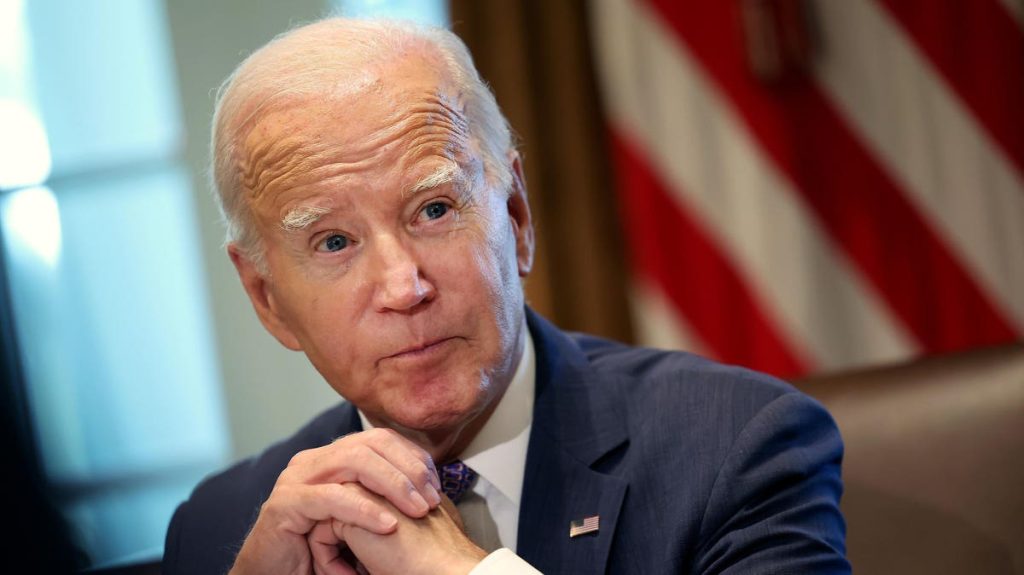The Biden administration has released new details on the potential scope of a new student loan forgiveness plan. That plan, which is being created as a replacement program for the one that the Supreme Court struck down over the summer, is currently in development, and should be finalized by sometime next year.
Here’s the latest.
Development Of New Student Loan Forgiveness Plan Is Underway
The Education Department is marching forward to establish a new student loan forgiveness program in the wake of the Supreme Court’s decision blocking President Biden’s initial student debt cancellation initiative in June. Biden’s initial plan would have provided sweeping student loan forgiveness of up to $20,000 for millions of borrowers. But with that plan scrapped, the administration is working on a backup option.
The new student loan forgiveness initiative will be established under the Higher Education Act, a different legal authority than the one the administration relied on for the first program. The Supreme Court ruled that the program, premised on emergency authority under the HEROES Act 2003, went beyond the scope of what Congress had envisioned, despite broad statutory language.
To establish a new student loan forgiveness plan under the HEA, the Education Department must go through what’s called negotiated rulemaking — a formal process involving a committee of stakeholders who debate the scope of the program during a series of public hearings. The process ends with the establishment of new regulations governing the program.
Last week, department officials announced next steps in the negotiated rulemaking process, including the formal establishment of the stakeholder committee and the schedule of public hearings. The department also released an issue paper that serves to outline the initial vision of the new student loan forgiveness program, and who it could benefit.
Constraints Of New Student Loan Forgiveness Plan Under HEA
In the issue paper, the Education Department notes that any new student loan forgiveness program would be constrained by the language and intent of the HEA’s compromise and settlement provision, which gives the department broad authority to “compromise, waive, or release any right, title, claim, lien, or demand” for federal student loans.
Under associated federal regulations, the department may only exercise the HEA’s compromise authority in situations where the borrower “is unable to pay the full amount in a reasonable time, based on financial information,” or the government “is unable to collect the debt in full within a reasonable time by enforced collection proceedings.” The compromise authority may also be exercised in circumstances where “[t]he cost of collecting the debt does not justify the enforced collection of the full amount, or [t]here is significant doubt” regarding the ability of the government to legally validate the debt.
Who Could Qualify For Student Loan Forgiveness Under Biden’s New Plan
With the above constraints in mind, the Education Department identified five broad categories of borrowers who could potentially qualify for student loan forgiveness under the upcoming HEA-based program:
- Borrowers who “have seen their balances grow due to the accrual of unpaid interest” whereby they “now have overall balances higher than what they originally borrowed.” This could be because of long periods of deferment, forbearance, or default, as well as lengthy periods of negative amortization under income-driven repayment plans. President Biden’s new SAVE plan eliminates negative amortization for borrowers who enroll in that new program, but it does not redress past periods of negative amortization.
- Borrowers who “are eligible for forgiveness under programs such as income-driven repayment but who do not apply for those programs.” This could be because of technological, socioeconomic, or disability-based barriers.
- Those who took out federal student loans to attend programs that the department subsequently determines “did not provide a minimum level of financial value sufficient to make loans affordable for many or most borrowers.”
- Borrowers who “first entered repayment many years ago, including well prior” to the creation of newer federal student loan forgiveness and relief programs such as IDR or Public Service Loan Forgiveness.
- Those who “experience hardship with respect to their student loans” and “continue to experience hardship in ways that the current student loan system does not adequately address,” despite access to programs like IDR and targeted student loan forgiveness programs.
What Comes Next For New Student Loan Forgiveness Program
The issue paper with the five borrower categories serves as an initial starting point as the negotiated rulemaking process begins. The stakeholder committee, which will hold its first public hearing next week, will consider these groups of borrowers, whether they should qualify for student loan forgiveness, and what the specific eligibility criteria for relief should be. The committee is comprised of representatives for student loan borrowers, loan servicers, veterans, legal services, borrowers with disabilities, and other key groups.
The hearings are open to the public, and the Education Department welcomes public participation and comment. Further hearings will be held in November and December.
After that, the department will publish draft regulations, which will provide significant more details on the parameters of this new student loan forgiveness plan. After another round of public input and comment, the regulations will be finalized, and the program will go live. The department has not provided information on a specific timeline, but this should happen sometime in 2024.
Further Student Loan Forgiveness Reading
Student Loan Forgiveness Approval Emails Sent To Second Wave Of Borrowers Under Biden Adjustment
$22 Billion In Student Loan Forgiveness For Defrauded Borrowers, With More Just Approved
$10 Billion In Student Loan Forgiveness Approved Under Overhaul For Borrowers With Medical Issues
Student Loan Forgiveness Proceeds And Payments ‘Cut In Half,’ But System Buckles
Read the full article here




